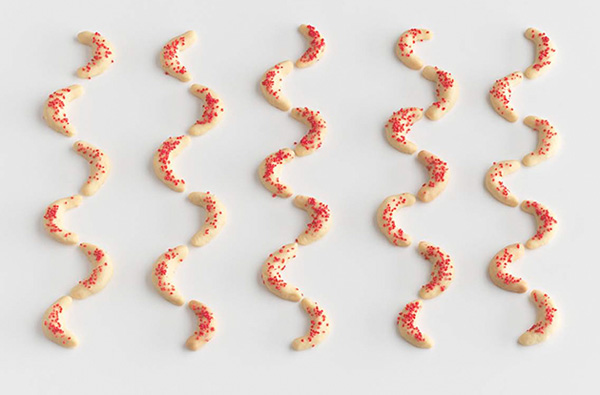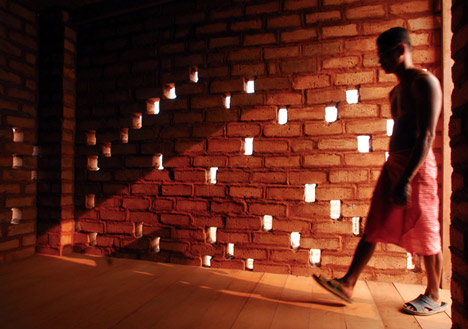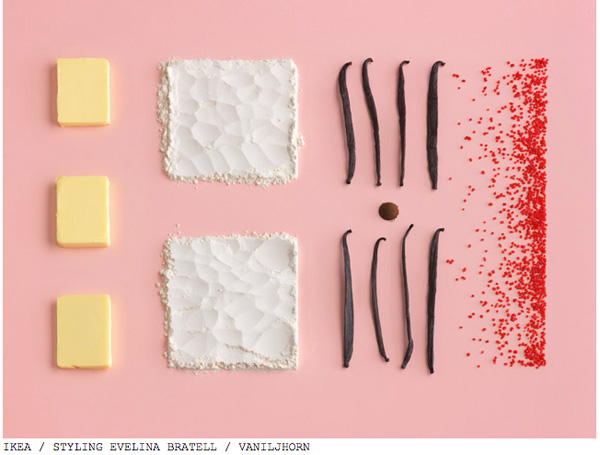Ikea's 'Homemade is Best' cook book contains 30 traditional Swedish baked goods recipes with a twist. Each recipe is complimented by an image of the ingredients before they are mixed together and baked. It is a wonderful documentation of the process of baking. NO, actually, it is the process of arranging the ingredients of baking.
The ingredients are placed in a decorative composition adjacent to each other and this image is then paired with the end result. But if I was to imagine the scenery of when I bake and cook in my kitchen, the image is a far cry from the stylized and glorified images of this book. It would be interesting to contrast this work by documenting the 'real' process of making and juxtaposition the images next to each other to further the notion of documenting a design process. Because, it is only the ingredients and the end result that is on display here, and the actual MAKING part seem to have been left out.
 |
| Kanelbullar (Cinnamon Buns) before |
 |
| Kanelbullar (Cinnamon Buns) after |
The homemade is best book serve the purpose of drawing more people towards the kitchen and obviously to IKEA's showroom. That is beside the point. These days, people seem to be more obsessed with the end result and product that they forget the beauty in the making of things. This is why I love this project. It starts to talk about the intimate and domestic in a beautiful way. It is a world away from fast-food outlets and mass-production of food.
 |
| Mandelmusslor (Almond mussels), before |
 |
| Mandelmusslor (Almond mussels), after |
Yet the irony is that this work is meant to draw people towards the mass-production of the IKEA kitchen. As if IKEA is saying: OK, so here we have it, we'll let you go back to domesticity and the art of making unique food in your own home so that you don't have to worry about getting your consciousness dirty with the immorality of mass-produced food. Leave the mass-production to us and you'll be a happy peach.
 |
| vaniljhorn (vanilla horn) after, from here |
Looking at the homemade is best work, makes me a happy peach but I just want to reconfigure the work to include the process of making it as well.
Now I know the point was not that at all, it is just the way I think. Originally, the ad company made the cookbook, created an iphone app that traced your exercise and told you when you'd done enough exercise and earned the calories to eat one of the recepies. Clever, isn't it. Apparently, the ad reached 40 million people without IKEA spending a cent on media and promotional costs..somehow...I am contributing to the publicity too. Hmmm.
Here's a link to the movie.
I think I might just visually suggest how this process would look if applied to the components of an architectural project. Watch this space.



















